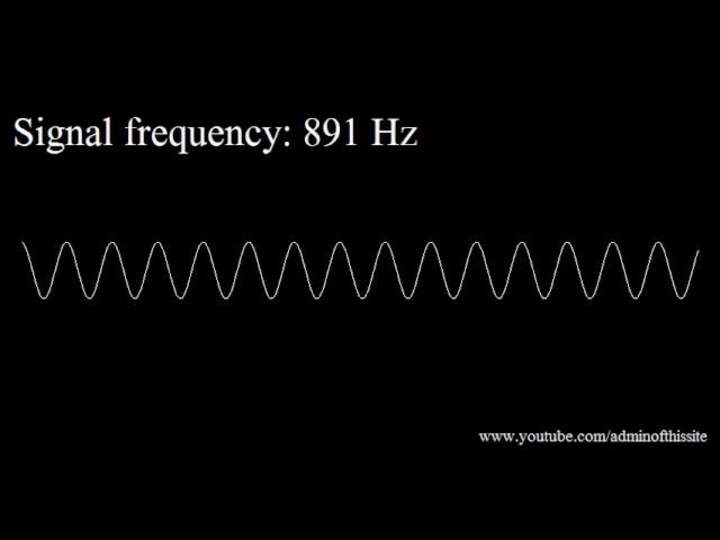Sinusoidal wave going trough entire human audio spectrum, starting at 20Hz and ending at 20kHz. Note that the frequency increases exponentially, the idea was to increase the frequency by constant fraction of currently played frequency rather than by a constant value (which would result in clearly noticeable fast change at lower frequencies and nearly no change at higher frequencies). Enjoy.
Note: This wave has the same volume level measured by acoustic pressure all the time, however human sound perception differs depending on frequency. For lower frequencies (below 1kHz) you might want to increase your volume, but don't forget to lower it later to avoid damage to your hearing.
If you don't hear anything below 40-50Hz even at full volume your audio hardware is probably incapable of playing lowest frequencies. You might want to try to listen on the headphones in such case. Also if you stop hearing sound somewhere between 10kHz - 20kHz - do not increase your volume for safety reasons. Every human hears a bit differently and have different hearing thresholds. Hearing range also changes with age. Younger people can usually hear higher frequencies.
For HD (High Definition) version of this test, which might yield better audio quality see: http://www.youtube.com/watch?v=H-iCZElJ8m0
Note: This wave has the same volume level measured by acoustic pressure all the time, however human sound perception differs depending on frequency. For lower frequencies (below 1kHz) you might want to increase your volume, but don't forget to lower it later to avoid damage to your hearing.
If you don't hear anything below 40-50Hz even at full volume your audio hardware is probably incapable of playing lowest frequencies. You might want to try to listen on the headphones in such case. Also if you stop hearing sound somewhere between 10kHz - 20kHz - do not increase your volume for safety reasons. Every human hears a bit differently and have different hearing thresholds. Hearing range also changes with age. Younger people can usually hear higher frequencies.
For HD (High Definition) version of this test, which might yield better audio quality see: http://www.youtube.com/watch?v=H-iCZElJ8m0
Video
Enlace externo
Descripción
20Hz to 20kHz (Human audio spectrum)
Clasificaciones
Formato
Video
Cursos / Niveles
1° Medio
Asignaturas / Ambitos
Ciencias Naturales
Eje
Física
OA
Objetivo de aprendizaje CN1M OA 10
Licenciamiento
Licencia Youtube
Objetivos de aprendizaje del recurso
Objetivo de aprendizaje CN1M OA 10Basal CN1M OA 10
Explicar fenómenos del sonido perceptibles por las personas, como el eco, la resonancia y el efecto Doppler, entre otros, utilizando el modelo ondulatorio y por medio de la experimentación, considerando sus:
- Características y cualidades (intensidad, tono, timbre y rapidez).
- Emisiones (en cuerdas vocales, en parlantes e instrumentos musicales).
- Consecuencias (contaminación y medio de comunicación).
- Aplicaciones tecnológicas (ecógrafo, sonar y estetoscopio, entretención, entre otras).
